



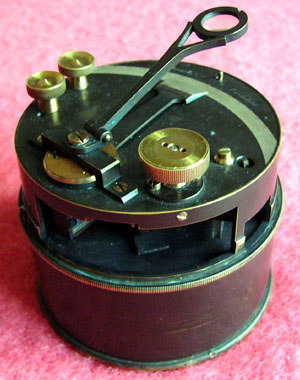
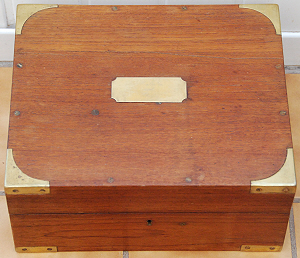
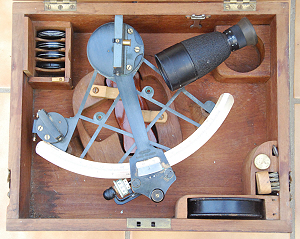
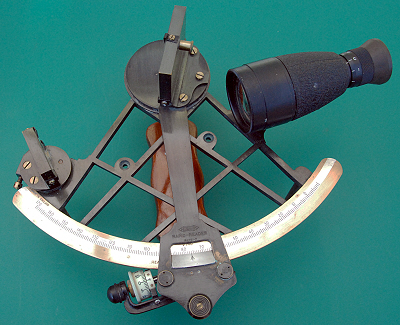
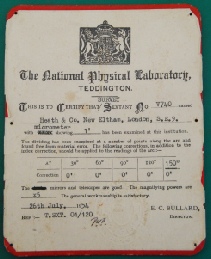
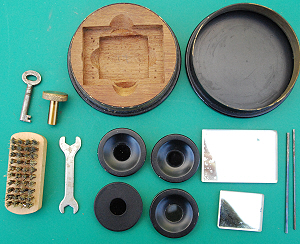
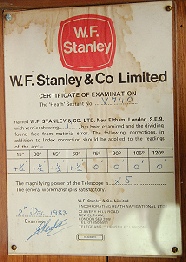
Heath Hezzanith Rapid Reader Survey Sextant made by W F Stanley at New Eltham (Stanley took over Heath in 1926). The NPL certificate is dated 1954 (when it was new) and the W F Stanley one is dated 1983. The black cylindrical tin holds the spare mirrors. The four filters fit over the telescope eyepiece. The small brass item with knurled handle is for locking the fine adjustment of the horizon mirror I think.
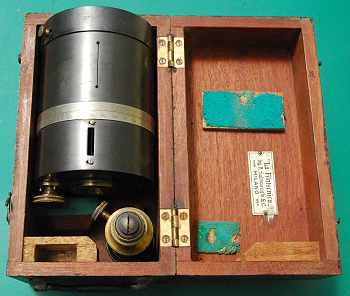
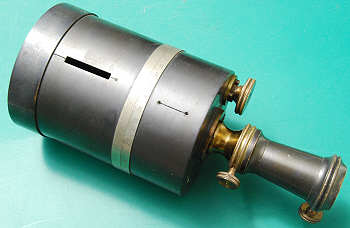
Adjustable Cross Staff by “La Filotecnica” Ing A Salmoiraghi, Milano. Early/mid 20th century. There is a compass in the top.
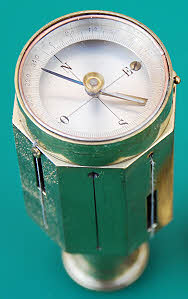
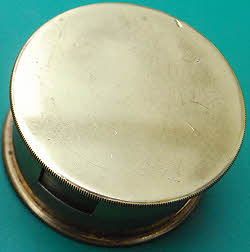
These optical squares were constructed like the apomecometer above but with the mirrors at an angle of 45 degrees to each other rather than 22.5 degrees. There was also a double version of the mirror type, to sight at 90 degrees left and right simultaneously.
Used to ensure offsets were measured at right angles when chaining.
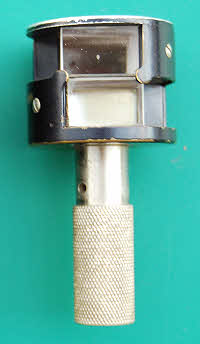
It has a black, cloth covered, card case.
Used to ensure offsets were measured at right angles when chaining.
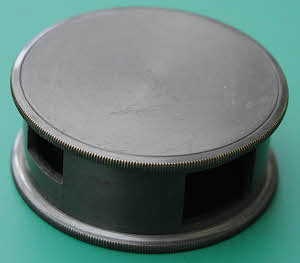
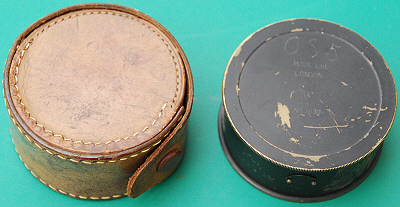
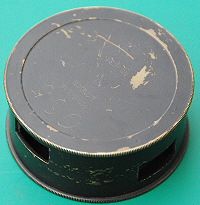
MDS Ltd “improved” optical square no.1534. Mid 20th century. At 2¾” diameter it is larger and heavier than the other optical squares in my collection. There is a bubble level inside the right angle aperture that can be seen with the reflected object. The mirrors are in poor condition. MDS were founded in 1920 as the Miscellaneous Disposals Syndicate Ltd, dealing in government surplus items. Ca. 1940 they were renamed the Manufacturers & Distributors Syndicate Ltd. Their address was 41 St James Gardens, Holland Park, London W11 and they had a factory at Empire Works, London Road, Horley.
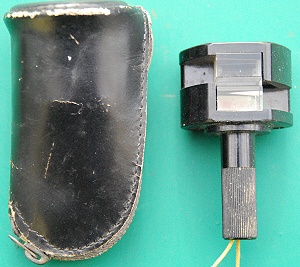
Double optical square dating from ca.1960. This is the prismatic type, in this case with two prisms, one above the other, to sight at 90 degrees left and right simultaneously. Made in England, same as the Stanley A1531. Leather zip fastening case and cord for hanging round the neck.
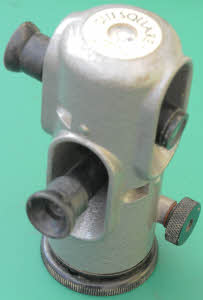
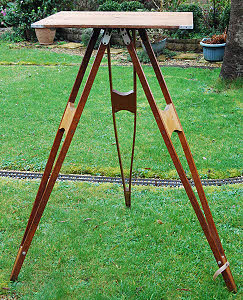
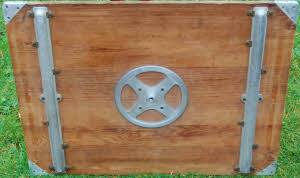
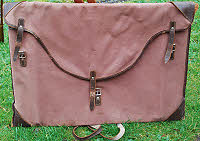

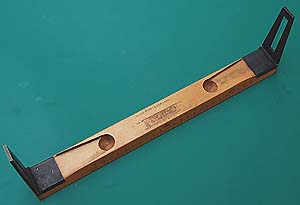
The edge scales are yards 6” to the mile and 2” to the mile.
It probably dates from the first quarter of the 20th century.
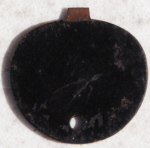


W Ottway & Co Rules Sighting 24” No A339 1924. This combined alidade and parallel rule was intended for use on a plane table by an army surveyor. The adjusting key shown right is housed in the small pocket on the face of the case. The rule is made of aluminium. The wooden case is lined with green felt.
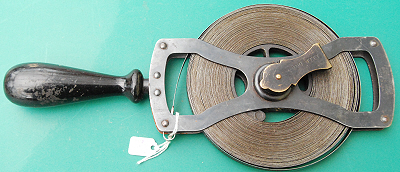
Lufkin Rule Co, Saginaw, Michigan, USA 100ft steel surveying tape, mid-
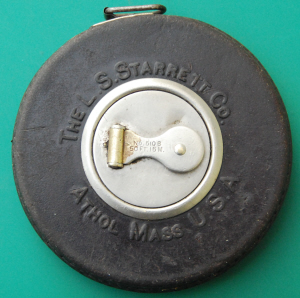
The L S Starrett Co Athol Mass. USA 50ft/15m metal tape measure in a leather case. No 5108. Imperial measures one side,metric on the other.
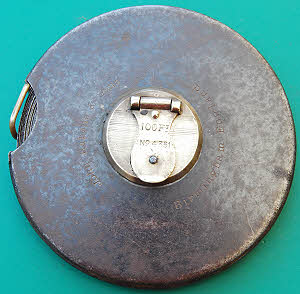
I have other surveying tapes that are cloth and leather cased by Rabone, by Chesterman and by Dean Bedington.
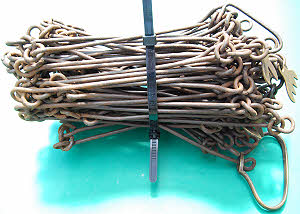
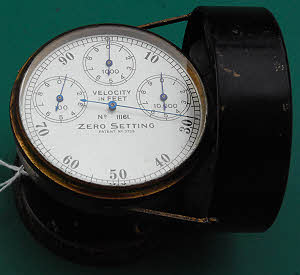
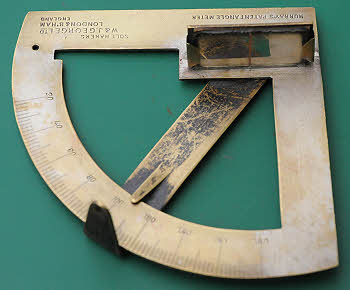
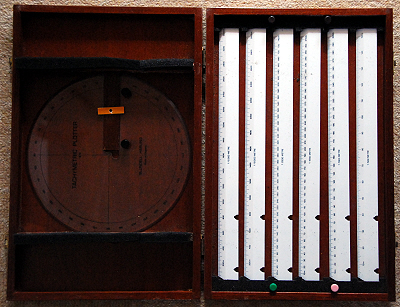
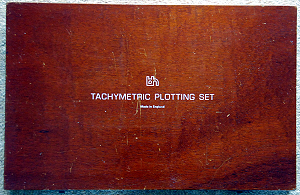
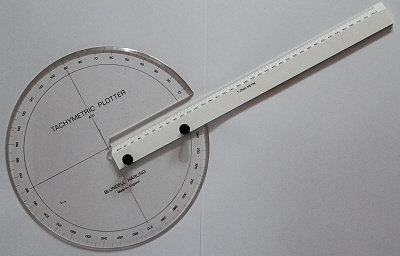
Blundell Harling Tachymetric Plotting Set no 870. Used for plotting tachymetric surveys
in which the position of features is determined by measuring angles and distances
from a central survey point. Six metric scales:-
Probably dates from the 1970s as model number changed by1980
| Early Sets |
| Traditional Sets |
| Later Sets |
| Major Makers |
| Instruments |
| Miscellanea |
| W F Stanley |
| A G Thornton |
| W H Harling |
| Elliott Bros |
| J Halden |
| Riefler |
| E O Richter |
| Kern, Aarau |
| Keuffel & Esser |
| Compasses |
| Pocket compasses |
| Beam compasses |
| Dividers |
| Proportional dividers |
| Pens |
| Pencils |
| Rules |
| Protractors |
| Squares |
| Parallels |
| Pantographs |
| Sectors |
| Planimeters |
| Map Measurers |
| Miscellaneous |
| Materials Used |
| Who made them |
| Who made these |
| Addiator |
| Addimult |
| Other German |
| USA |
| Miscellaneous |
| Microscopes |
| Barometers |
| Hydrometers & Scales |
| Pedometers |
| Surveying Instruments |
| Other instruments |
| Workshop Measuring Tools |
| Catalogues & Brochures |
| Levels & Theodolites |
| Compasses & Clinometers |
| Miscellaneous surveying |
| Micrometers & Verniers |
| Engineering rules and gauges |
| Wood rules & calipers |
| Dial gauges & miscellaneous |